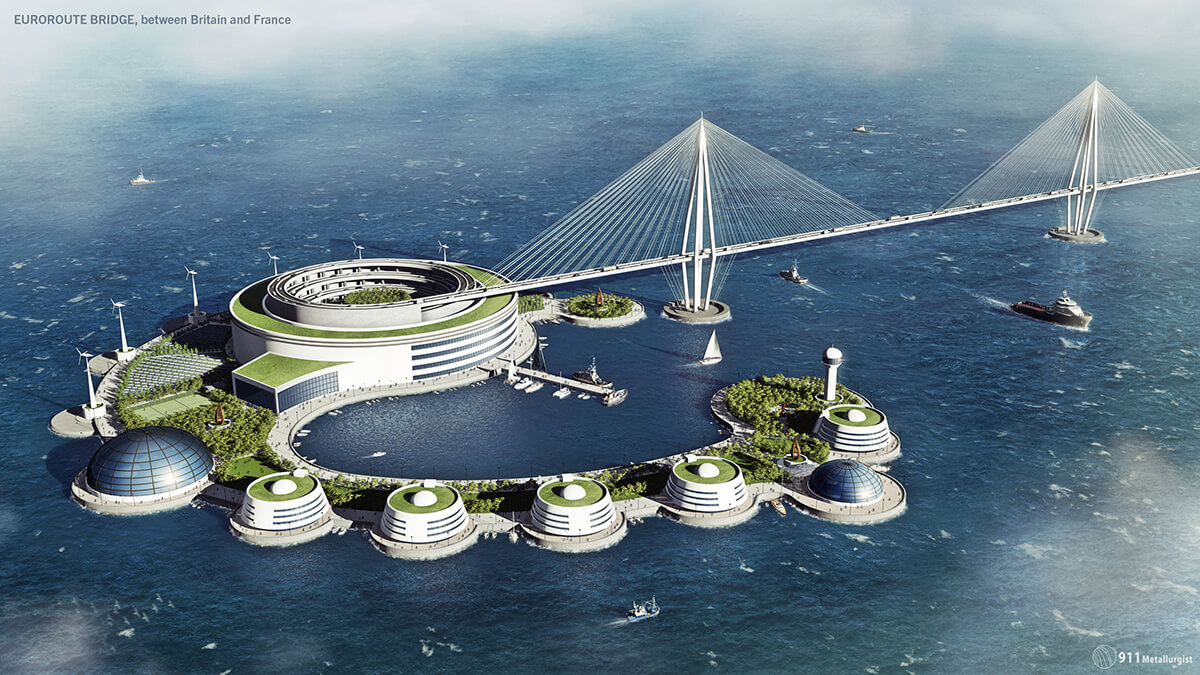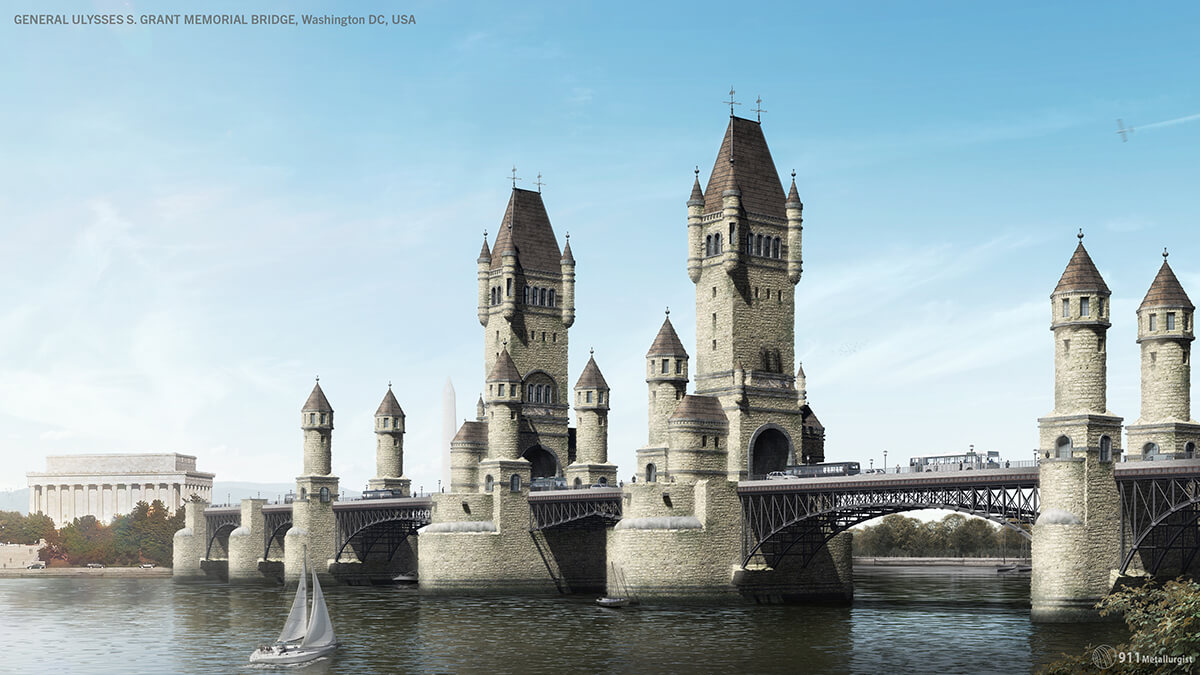
There is little so inspiring in the world of architecture as a perfectly-designed bridge. From London’s iconic Tower Bridge to the characterful Brooklyn Bridge, through to the outlandish sci-fi style of the Millau Viaduct in France, bridges reveal the marriage of art and engineering in a manner incomparable to any other structure.
But while big ideas are important, building bridges is hard work. Many of the most visionary ideas are stopped in their tracks by financing, planning, or engineering reasons. We decided to look at four great bridges that never saw the light of day, and show them as they might have appeared.
EuroRoute Bridge, between Britain and France
The Channel Tunnel sounded pretty sci-fi before it was built, but the experience of taking a train beneath the sea from France to England is actually pretty mundane. It would have been nice to have a window or two to see the aquatic world outside. But Jean-Paul Viguier’s EuroRoute Bridge, which competed for the honour of connecting Calais and Dover, might have been a bit too sci-fi for comfort!

In a design that would have worked for as a metaphor for Anglo-French relations, Viguier’s bridge would have reached just part of the way across the Strait of Dover before plunging into the sea. More precisely, the bridge from Calais would lead to a mid-sea island, from where it would spiral down past shops, hotels, and leisure facilities into an undersea tunnel. From there, the road would rise up to an identical island off the coast of England, leading back up onto a continuation of the bridge and into a hole bored into the white cliffs of Dover. Whew!
Hudson River Bridge, New York, USA
Gustav Lindenthal’s bridge was to have been twice the length of the George Washington Bridge, connecting New York City’s 57th Street to Hoboken in New Jersey. It was an epic vision, with room for 12 rail tracks, 24 motor lanes, and two pedestrian walkways.

The 8-foot concrete cornerstone was laid on June 18th, 1895, but that’s about as far as the bridge ever got. Raising the $37 million required to complete the project became unfeasible in the wake of the 1893 financial crisis. The cornerstone remains, however, as a curio for visitors to The Stevens Institute of Technology in Hoboken, where it can still be found today.
General Ulysses S. Grant Memorial Bridge, Washington DC
John L. Smithmeyer and Paul J. Pelz drew up plans for a bridge to honour the 18th President of the United States just where DC’s Arlington Memorial Bridge crosses today. But the government was unnerved by the bridge’s association with the Union Army general and vetoed the project’s funding.

It would have been quite a sight: “[No] such elaborate and imposing structure of the bridge’s kind has ever been built or even contemplated before in the United States,” according to a Baltimore Sun article published in 1887, “and its resemblance to the causeway of a great fortress, approached by a series of fortified outworks, is kept up by the bold arches spanning the roadway and their supporting towers and turrets.”
Kerch Strait Bridge, between Crimea and Russia
In its earliest incarnation, the Russians envisioned a bridge over the Kerch Strait as the beginning of a new path from Europe to Asia. The British government, too, eyed the route for its potential for easy passage to colonized India. Then two world wars hit, and plans by Hitler’s architect, Albert Speer, to build a crossing, eventually dissolved along with the Russo-German alliance.

After WW2, the great Russian engineer Boris Konstantinov proposed a stark and melancholy bridge across the same gloomy corner of the Black Sea. Work began but despite the inclusion of hefty monuments in honour of Joseph Stalin, the Soviet leader pulled the plug for economic reasons.
With today’s visionaries look towards a greener future of sustainable living bridges and garden walkways, we’re saying goodbye to an era of monolithic engineering feats of the post-industrial age. Who knows what solarpunk visions are forming on the desktops of today’s great architects?
Sources
The Historical Marker Database. (2016). Hudson River Bridge Cornerstone. hmdb.org
Waldman, B. (2011). The New York City that Never Was: Part II Bridges untappedcities.com
Smithsonian. (2011). The Monuments That Were Never Built smithsonianmag.com
Ghosts Of DC. (2013). The Unbuilt Ulysses Grant Memorial Bridge. ghostsofdc.org
Marshall, C. (2018). EuroRoute. roads.org.uk
Jodidio, P. (2002). Jean-Paul Viguier: Architecture 1992-2002. Basel: Birkhauser
Kraynov G.N. (2016). From History of Construction of Kerchensky Bridge In Days Of The Great Patriotic War. world-science.ru
Jaw Crushers and pulverizers help turn rock into sand to make cement and build bridges.
